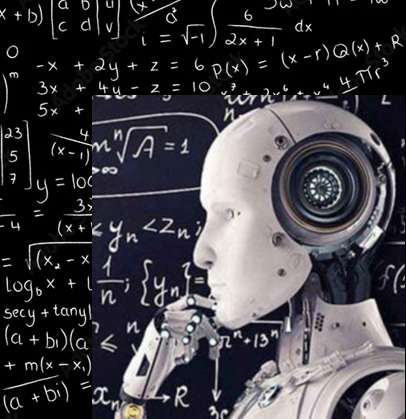Relevance of STEM Education in the Age of AI

Sometime in late 1780s, a math teacher in an elementary school in Brunswick, Germany, asked his students to add up the numbers from 1 to 100 to keep them occupied for a while so he could attend to other things. To the teacher’s surprise, a boy raised his hand and shouted the right answer to the problem very quickly. The boy was none other than Carl Friedrich Gauss, a math prodigy who years later earned the title “The Prince of Mathematics” for his contributions to mathematics, astronomy and other fields. The young genius solved the problem by identifying a pattern in adding two numbers from the beginning and end of the series, 1 and 100, 2 and 98, 3 and 97… and calculated the solution quickly. Indeed, pattern recognition is a fundamental attribute of a genius.
Fast forward to 21st century, when Artificial Intelligence is a hot topic in science, technology, educational and entrepreneurship circles. Every discipline is scrambling to adopt and adapt AI and the opportunities it presents to do things more efficiently. For example, AI excels at data processing, where it identifies recurring patterns in data to classify, categorize, and understand it. Question is, with adoption of AI, what role would the geniuses or the average workforce of the future play? Will the adoption of AI turn everyone into a genius in future? Or will the adoption of AI render the STEM fields irrelevant?
Many predict massive workforce unemployment and the need for an agile workforce to continuously (re)learn and (re)invent itself to remain employable. Question is, what should a STEM curriculum focus on today, given the complexities of the problems of the future as well as the opportunities and the challenges that AI presents for the educators and the students alike, so the students of today become the effective and agile workforce of the future who can tackle the complex problems of their time.
One can argue that the fundamental principles of critical and interdisciplinary thinking, focused and creative problem-solving, and communication skills that students learn in STEM fields become even more relevant, no matter the advancement of AI in everyday life. A successful workforce of tomorrow will use AI and other intelligent tools, but they would still need to focus their attention, think interdisciplinary, analyze and synthesize solution sets, and collaborate and solve problems. More importantly, the successful workforce of tomorrow should be able to collaborate and communicate with each other effectively to solve the complex problems of their time.
This raises the bar for educators of STEM fields in today’s schools and universities to put more emphasis on the core STEM concepts. If students can feed their science or math problems to AI and solve them quickly or use AI to write their essays, then the STEM educators should push their students even more to learn how to focus on a problem and apply critical thinking, problem-solving and effective teamwork and collaboration to solve problems. Also, STEM educators should emphasize the importance of communication skills so the students can better learn how to communicate with others, crucial skills that an agile workforce will require for continuous adaptability to (re)learn and (re)invent themselves and be able to work with others.
The schools and education centers will acquire advanced AI based technologies or labs/tools to continue teaching students STEM disciplines; however, the main enabler will still be the STEM educator who will teach the fundamental STEM concepts to the students and students will still have to learn the sciences, math and technology to be able to use AI effectively. Moreover, a student will still have to learn how to communicate and collaborate with others to tackle challenging problems. Average students will learn how to find solutions to complex math/science problems, perhaps faster than Gauss, but the core skills to frame and analyze a problem, synthesize a solution, and communicate it effectively with others will still be needed.
One can argue that in a future where AI helps solving problems more efficiently, the master enabler will still be the intelligent human, who is trained in STEM disciplines and knows how to collaborate with others. To be able to design a robot, an engineer must start with a blinking LED.





